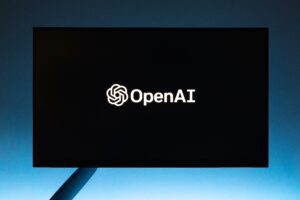“People want to work in a company that they believe in, where they are respected & feel valued.”
–Howard Schultz
Imagine this: Kavita, a star performer, starts missing deadlines & her usual enthusiasm seems to have vanished, dipping team morale.
This scenario highlights an important element for any successful business: motivation. Just like a car needs fuel to operate, employees need motivation to be truly engaged & productive. In today’s competitive business landscape, promoting a motivated workforce is not a choice – but a necessity.
Understanding Motivation Science
So, how do we motivate Kavita & create a consistently motivated workforce? The answer lies in a powerful tool: motivation science – field that explains the “why” behind employee behaviour.
Intrinsic motivation burns brightly within individuals. it is the fire ignited by a desire to learn, grow, & contribute to something meaningful. Employees driven by intrinsic motivation find satisfaction in learning new skills, tackling challenging tasks, & seeing the impact of their work. They are energized by the inherent purpose of their activities.
Extrinsic motivation, on the other hand, comes from external sources like bonuses, promotions, or public recognition. While valuable for short-term boost, they often rely on external validation & can lose their effectiveness over time.
The ideal scenario lies in achieving a healthy balance between these two forces.
Balancing Psychological Motivation Factors
Now, let us understand the psychological factors driving human actions that act as the building blocks for a truly driven workforce.
-
Goal Setting & Autonomy: The Power of Ownership
Empowering employees to set clear & challenging goals is a powerful motivator. However, the magic happens when you combine goal setting with autonomy. This means giving employees the freedom to choose their approach to achieving those goals. When employees feel a sense of ownership, it encourages a sense of accomplishment boosting intrinsic motivation.
-
Meaningful Work: Connecting the Dots
Employees crave purpose. Connecting individual tasks to the company’s mission is important. When employees understand the bigger picture & see the impact of their work, it ignites a deeper level of motivation. A combined study by Michael Page & Ipsos (2023) revealed that 92% of Indian employees are motivated by working on projects they care about & with colleagues they enjoy working with. Help your team see how their contributions fit into the overall growth & watch their engagement soar.
-
Recognition & Feedback: The Fuel for Growth
Everyone appreciates a pat on the back. Providing regular, personalised recognition for achievements is a powerful motivator. But don’t stop there, combine positive reinforcement with constructive feedback to create a well-rounded approach. Constructive feedback helps employees understand their strengths & areas for improvement, generating a sense of growth & self-efficacy.
-
Growth Opportunities: Keeping the Spark Alive
Stagnation is the enemy of motivation. A study by BW People (2021) found that 89% of Indian employees are highly motivated by challenges & extra responsibility at work. Providing opportunities for continuous learning & development is key. This can take the form of training programs, mentorship opportunities, or challenging assignments that push employees outside their comfort zone. By investing in your employees’ growth, you fuel their intrinsic motivation & cultivate a future-proof workforce.
-
Clear Communication: Transparency is the key
Transparency builds trust & fuels motivation. Informed employees feel valued & more likely to be intrinsically motivated. Here’s how to achieve clear communication:
- Regularly update employees on company goals, challenges, & decisions.
- Encourage questions & concerns through open communication channels.
- Ensure clear & concise messaging that focuses on the “why” behind decisions.
-
Design Meaningful Work: Break down complexity
Complex tasks can feel overwhelming. Break down large projects into smaller tasks. This allows employees to see progress & experience accomplishment. While routine tasks are necessary, offer opportunities for employees to use their skills in new ways & tackle challenging projects.
Motivation Theories: Frameworks for Building a Motivated Team
The science of human motivation offers valuable frameworks for leaders to build a thriving, motivated team. Let us explore a couple of key theories:
- Self-Determination Theory (SDT): This theory focuses on three core psychological needs in the workplace:
- Autonomy: Employees need to feel a sense of control over their work & decision-making.
- Competence: They desire to feel capable & effective in their roles.
- Relatedness: Employees crave a sense of connection & belonging within the team.
By promoting these elements, leaders can create a work environment that fuels intrinsic motivation & improves employee well-being.
- Expectancy Theory: This theory focuses on the interplay between effort, performance, & outcomes. Employees are more motivated when they believe:
- Effort leads to Performance: Their hard work will translate into achieving desired results.
- Performance is valued: Their accomplishments are recognized & rewarded (promotion, bonus, etc.).
By establishing a clear link between effort, performance, & valued outcomes, leaders can encourage & further motivate employees.
In today’s competitive landscape, a motivated workforce is no longer a luxury – it is the key to achieving your company’s full potential. To learn more about motivation science & how to motivate employees – Connect with the experts at BlewMinds.




